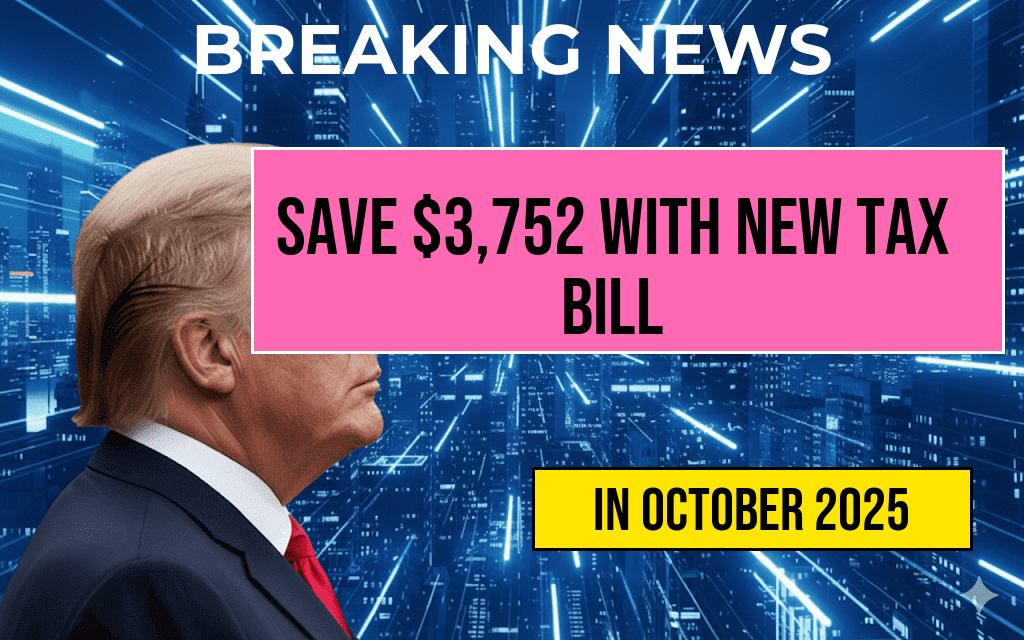Legislation passed this week has significantly increased the standard deduction limit for individual taxpayers, raising it from $30,000 to $40,000. This change aims to provide relief to middle-income earners and simplify the tax filing process by reducing the number of taxpayers who itemize deductions. The adjustment reflects a broader effort to enhance the tax code’s responsiveness to economic shifts and inflation, which have eroded the purchasing power of previous thresholds. The new law, signed into effect by Congress, is expected to impact millions of filers nationwide, potentially lowering their taxable income and, consequently, their tax liability. Financial analysts anticipate this move will also influence tax planning strategies and affect government revenue projections.
Details of the Legislative Change
What the Increase Means for Taxpayers
- The standard deduction will now be $40,000 for individual filers, up from $30,000.
- For married couples filing jointly, the deduction remains unchanged at $40,000, aligning with the new threshold for single filers.
- Taxpayers who previously itemized deductions exceeding $30,000 but less than $40,000 may now find it more advantageous to claim the standard deduction.
Context and Rationale Behind the Increase
The adjustment aims to account for inflation, which over the past few years has diminished the real value of previous deduction limits. According to data from the U.S. Bureau of Labor Statistics, inflation has averaged around 3% annually, gradually shrinking the purchasing power of fixed deduction thresholds. Policymakers argue that raising the standard deduction fosters fairness by simplifying tax compliance and easing the financial burden on middle-income households, especially amid rising living costs.
Impacts on Tax Filing and Revenue
Potential Effects on Tax Filers
| Scenario | Before Legislation | After Legislation |
|---|---|---|
| Standard deduction claim | Up to $30,000 | Up to $40,000 |
| Itemized deductions likely to be claimed | More common among high-deductions filers | Fewer filers itemize, more claim standard deduction |
| Tax liability impact | Varies based on individual deductions | Potential reduction for many middle-income filers |
Experts suggest that this change could cause a shift in tax reporting patterns, with a likelihood of increased standard deduction claims and decreased itemized deductions overall. This shift might streamline the IRS’s processing workload and reduce compliance burdens but could also lead to short-term fluctuations in tax revenue collections.
Revenue Considerations and Budget Effects
According to estimates from the Congressional Budget Office, expanding the standard deduction could reduce federal revenue by several billion dollars annually. However, proponents contend that the boost in disposable income may stimulate economic activity, potentially offsetting some revenue loss over time. The Treasury Department has also indicated plans to monitor the legislation’s impact closely, adjusting future tax policies accordingly.
Reactions and Analysis
Support from Policymakers and Advocacy Groups
Many lawmakers from both parties have expressed support for the increase, emphasizing its role in simplifying tax compliance and providing relief to hardworking Americans. Tax policy advocates highlight that raising the standard deduction reduces the need for complex record-keeping and audits, especially for middle-income households.
Criticism and Concerns
However, some critics warn that the reduction in revenue could limit federal funding for essential programs. They argue that higher-income taxpayers who itemize deductions may benefit less from the change, potentially widening income inequality. Additionally, there are concerns about the long-term fiscal sustainability of such deductions amid ongoing government spending priorities.
Implications for Future Tax Policy
The recent legislative adjustment signals a potential shift towards more inflation-responsive tax thresholds. Experts suggest that future reforms could further increase the standard deduction, possibly incorporating automatic adjustments tied to inflation metrics. This approach aims to maintain the fairness and simplicity of the tax system in an evolving economic landscape.
For more detailed information on federal tax policies and standard deductions, consult resources such as IRS Tax Topics or analyses from reputable financial news outlets like Forbes.
Frequently Asked Questions
What is the new standard deduction limit introduced by the legislation?
The new legislation increases the standard deduction limit from $30,000 to $40,000, providing taxpayers with a higher deduction amount on their taxable income.
Who is eligible for the increased standard deduction?
All taxpayers who qualify for the standard deduction under current tax laws are eligible for the increased limit, regardless of their filing status or income level.
When does the new standard deduction limit take effect?
The increased standard deduction limit applies to the tax year starting in 2024, with filings due in 2025.
How does the increase in the standard deduction impact taxpayers?
The higher standard deduction can reduce taxable income, potentially lowering overall tax liability and making filing simpler for many taxpayers.
Are there any changes to itemized deductions with this legislation?
No, the legislation specifically increases the standard deduction. Itemized deductions remain unchanged unless specified separately in future tax laws.








